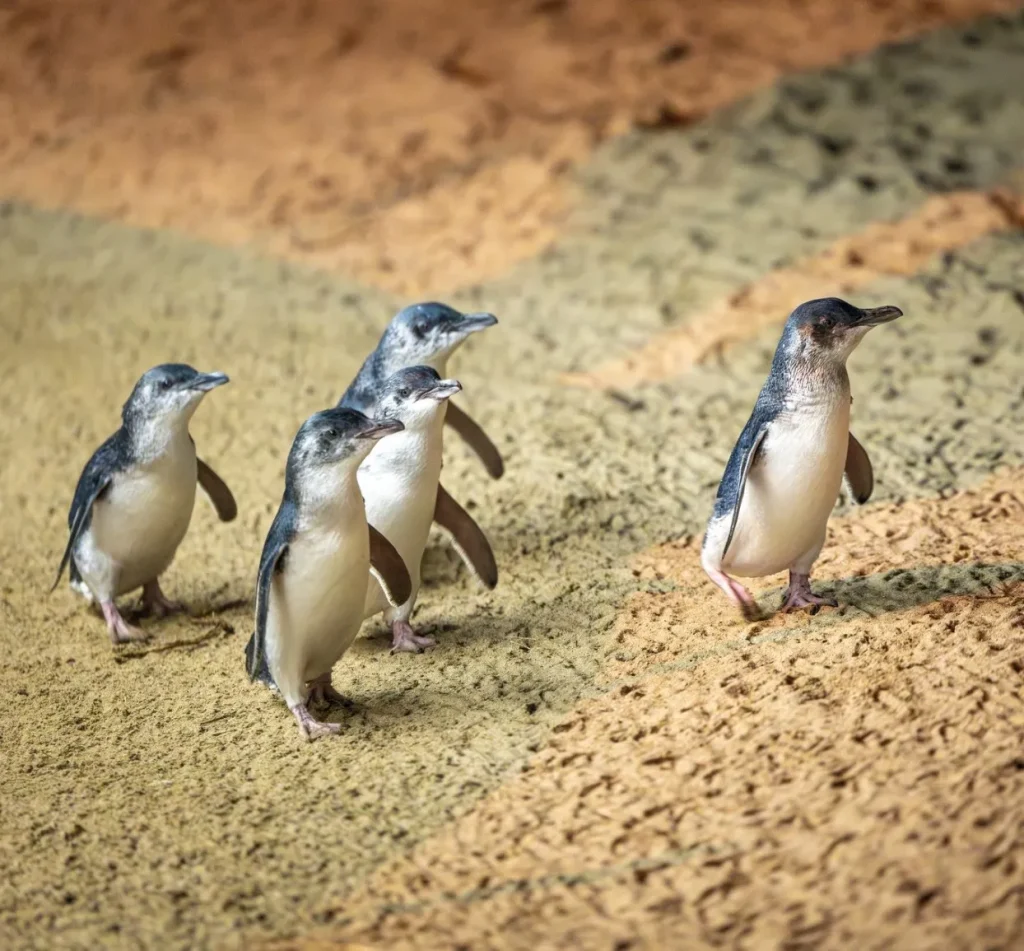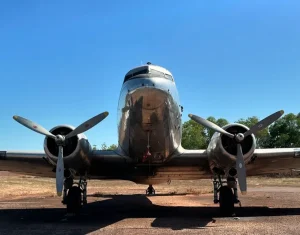On the Victoria’s picturesque coast lies Phillip Island Nature Parks, where one of Australia’s beloved natural spectacles is held—the Phillip Island Penguin Parade. Crowds of people flock to this magical show every year and see cute fairy penguins waddling across Summerland Beach in twilight, returning back home to their sand dune burrows after a day at sea. In addition, it is through this parade that nature lovers experience nature and also play a vital role in conserving these captivating creatures.
History of the Penguin Parade
The history of Penguin parade dates back to the early 1900s when curious onlookers first started assembling for just informal gatherings. The penguin parade turned into a major attraction by the 1920s attracting viewers with its fairy penguins entering their burrows. Queen Victoria Nature Parks, an organization that funds itself, has, over time, been able to turn what was merely watching into an elaborate conservation project involving both tourism and arduous protection and study efforts directed towards this group.
Penguin Population on Phillip Island
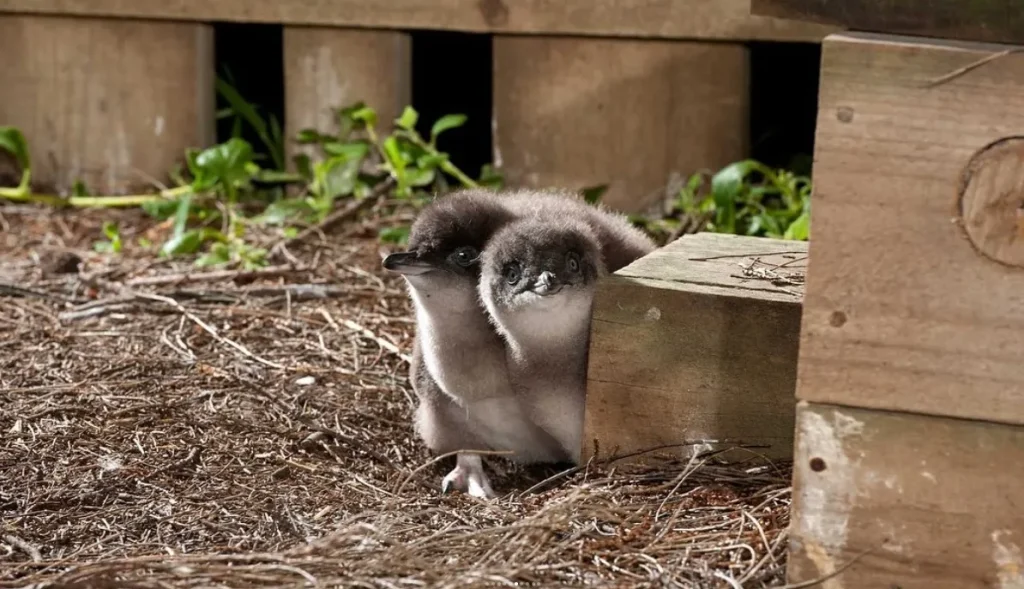
Phillip Islands boasts one of world’s largest colonies of Fairy Penguins. In order to maintain and increase the population of fairy penguins, various programs have been initiated by the Natural Park Board. There are regular updates from the Natural Park Board about breeding success as a result of initiatives such as habitat restoration or predator control; about fifty per cent of chicks fledged in 1996 were reared within predator-proof fences.
Population dynamics for these penguins are being monitored closely using data collected contributing towards broader research projects aimed at understanding how environmental change and human interactions affect their survival chances. Such ongoing studies are significant in preserving future populations on Philip Island while providing useful information for global conservation practices.
Behind-the-Scenes at the Penguin Parade
Beyond this lovely sunset waddle is a complex operation coordinated by Rangers from Phillip Island Nature Parks. They ensure that visitors enjoy themselves without disturbing the behaviour patterns adopted by these birds. The Underground Escape, which has a 25-meter viewing window, is an intimate setting that respects the penguins.
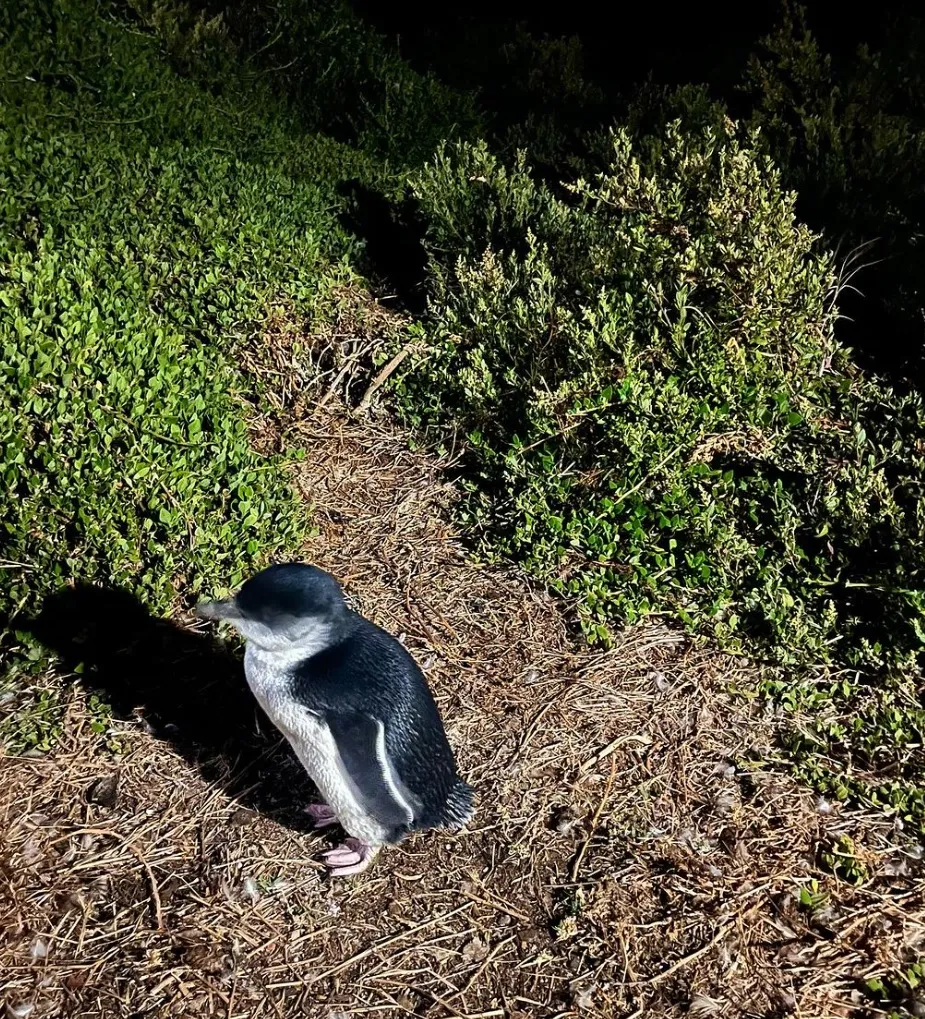
To minimize human impact on Phillip Island’s most precious tourist attraction, there are also sophisticated means such as the sailing drone awaiting deployment for monitoring penguin feeding areas without causing any intrusion. This technology allows the acquisition of more information regarding their feeding habits and diet, plus helps to protect other organisms in this delicate marine environment, including Australian fur seal females and adult Short-tailed shearwaters.
Visitor Centre and Educational Programs
The Phillip Island Visitor Centre is not just the starting point of the Penguin Parade, but also serves as an educational facility with informative displays and interactive exhibits. Its programs are aimed at educating visitors about the life cycle of penguins, the challenges they face and what conservation measures have been put in place to save them.
Here are some highlights of key features offered at the centre:
- Antarctic Journey Virtual Reality Attraction: This attraction takes a person into the heart of Antarctica—a distant icy world where many species of penguin live—providing a wider context within which to appreciate conservation lessons learnt from Phillip Island.
- Koala Conservation Centre: Although the main focus is penguins, broader biodiversity conservation is also taught at the visitor centre, highlighting efforts to mitigate damage to other native species, such as koalas.
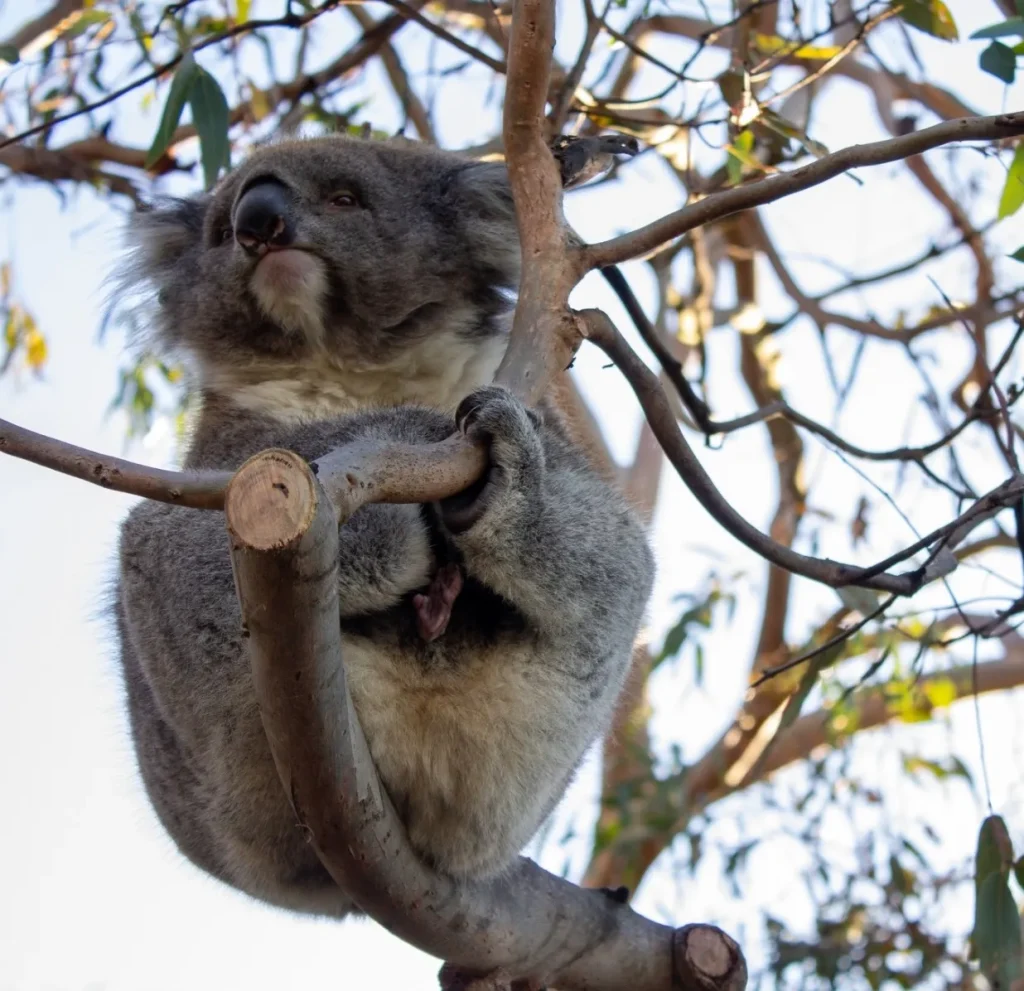
These are significant programs since they deepen understanding and appreciation among visitors and turn them into potential future conservationists.
Underground Viewing Experience
The experience of viewing from beneath the ground at Phillip Island provides a unique perspective on daily parade. Within a bunker-like structure, visitors can watch penguins eye-to-eye, which creates a very intimate experience. This method enhances visitor experiences while it also acts as a critical research tool that scientists use to observe penguin behaviors without interfering with their natural settings.
Table: Features of the Underground Viewing Facility
| Feature | Description |
|---|---|
| Bunker Window | Allows visitors to see penguins up close as they return to their burrows. |
| Intimate Viewing | Limits the number of visitors to reduce stress on the penguins and preserve the natural experience. |
| Research Access | Equipped with state-of-the-art technology for researchers to monitor penguin health and behavior discreetly. |
Apart from improving the visitor’s experience through bringing us closer to these cute animals, it also emphasizes on the importance of maintaining wildlife while conserving our environment so that we leave with deep impression in our hearts and respect for nature around us.
Monitoring Penguin Behavior

Continued conservation efforts heavily rely upon watching over behavior patterns made by little penguins at Phillip Island. For instance, Nature Parks’ researchers employ several non-invasive techniques to keep track of health, breeding habits as well as migration routes taken by these creatures. This information is vital in making deliberate decisions about habitat management and visitation practices that would not disturb colonies during their breeding season. The introduction of ready technology in sailing drones has been groundbreaking in offering detailed insights concerning how penguins feed or interact within their normal marine environments. In addition, this kind of monitoring allows one to know what climate change does in order to predict the future challenges for penguins.
Moreover, the information collected helps the visitor centre provide educational material that is relevant and timely. By understanding such complexities in penguin behavior, the rangers are better placed to tell correct stories to visitors in an engaging manner thus enhancing their experience with these creatures they like.
Conservation Efforts and Research Projects
The Penguin Parade is not just a popular tourist attraction; it is also a critical conservation and research hub. Various initiatives by Phillip Island Nature Parks seek to maintain fairy penguins’ natural habitats and ensure their populations remain stable and healthy. Some of these projects involve habitat restoration, predator control programs, as well as community education on conservation efforts for residents living around there or visiting tourists.
One of them includes Sand relocation whereby sand dunes have been moved providing safe breeding grounds for the birds thus protecting burrow areas from being eroded—this being crucial in promoting safe breeding grounds for these animals. Furthermore, entanglement prevention project aimed at reducing marine debris that could threaten the lives of penguins and other sea creatures around Phillip Island.
Key Conservation Projects and Their Impact:
- Sand Dune Stabilisation: It maintains structural integrity of penguin burrows which shield them away against extreme climatic conditions as well as human interference.
- Project for Entangled Seals: A program that focuses on saving and rehabilitating seals that get entangled in fishing nets or plastic debris, so as to keep the equilibrium of marine ecosystem that supports penguin populations.
These projects exhibit Phillip Island Nature Parks’ approach toward consistencies, multifacetedness, exactitude and wholeness in maintaining a sustainable environment for both wildlife and visiting tourists.
Life of Penguins at Phillip Island
A fairy penguin’s daily life on Phillip Island is quite interesting from morning till evening. They spend most of their day hunting small fish and squid in the Bass Strait waters, which are their main diet. After sunset, one of the most enchanting sights at the Parade is watching these penguins waddle back to their beachfront burrows, navigating the terrain with surprising agility given their small stature.
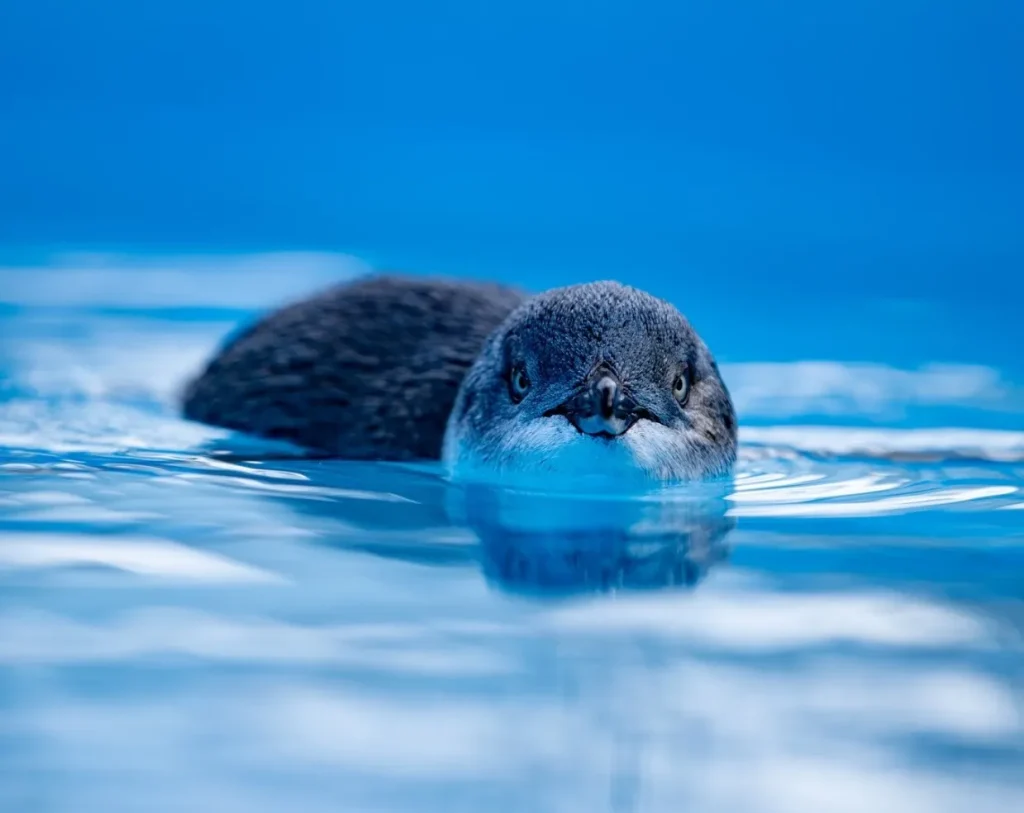
During breeding season, things become even more chaotic for our penguin mothers and fathers. While one parent fishes offshore during daytime, another adult warms up eggs within burrow nests. The bond between parents and their fluffy chicks is an emotional part of their behavior that provides insight into how they must deal with raising children in such a vulnerable place.
Penguin Species at Penguin Parade
Though it is commonly believed that fairy penguins are only present during parades, other species have been spotted on Phillip Island shores during some seasons. Diversification within this group can be attributed to variations associated with larger groups including king penguins from Antarctica coming occasionally among others hence comparing them can give clear distinctions about various aspects of a family tree.
It is important to understand interactions among various species of penguins so as to manage habitats as well as ensure environmental needs for each species are met. Many conservation efforts require such understanding which comes from researches like this one since its focus narrows down into complex marine biodiversity dynamics around Philip island basin.
If you would like to observe these cute little penguins for yourself in person then it is recommended that you join our organised Phillip Island day tours.
Adult Penguins Behaviors
The adult Little Blue Penguins have many interesting ways by which they communicate with each other. Ongoing studies are aimed at understanding their complex social interactions, means of communication and foraging conducts. These cues let scientists know about the overall health of a population, its social structure within a colony and how successful breeding is likely to be.
Such adult penguin behaviors teach us about the tenacity and flexibility that species have when exposed to environmental changes. These insights have therefore led to the designing of better conservation strategies, which can be adapted quickly to meet penguins’ needs in order to safeguard their survival.
Conclusion
Phillip Island’s Penguin Parade is not just for fun; it is an incredible conservation program that blends research, education and wildlife preservation together. Visitors who come here can connect with nature in such a way that they develop respect and admiration towards these remarkable birds. Therefore, while still learning from the experience there will thus be this amazing pageant preserved for all time as well as sustainable existence for Little Blue Penguins remaining in their natural homes alongside our evolving conservation strategies.
FAQ
What are some steps taken to minimize tourism impact on penguins?
The Nature Parks have also set up strict guidelines for visitors and they thing of how many tourists can be allowed to visit during a parade. In addition, specially built viewing areas are used to reduce human interference.
How do scientists keep track of the condition of the entire population of penguins?
Researchers employ non-intrusive methods such as drones that are used from a distance up in the sky and frequent health checks that take place at breeding time in order to ensure good health.
Is there anything visitors can do to help conserve the species?
Donating money towards conservation efforts or joining as volunteers, attending educational programs conducted by park management, and following all regulations set by the park authorities.
Are there any other features in Phillip Island apart from Penguin Parade?
Yes, Phillip Island is also home to the Koala Conservation Centre, where you can spot koalas as well as various other wildlife like seals and short-tailed shearwaters, among other bird species.
What’s the ideal time of the year to go see this parade?
This is usually between late August through early February known as their breeding season when you can witness a variety of behaviors like taking care of tender chicks.
